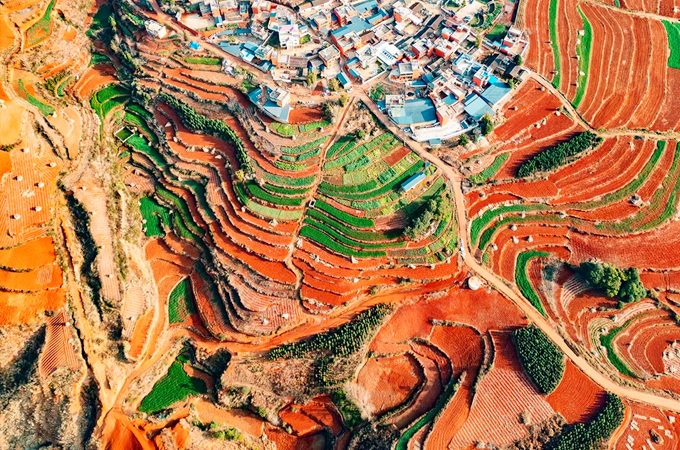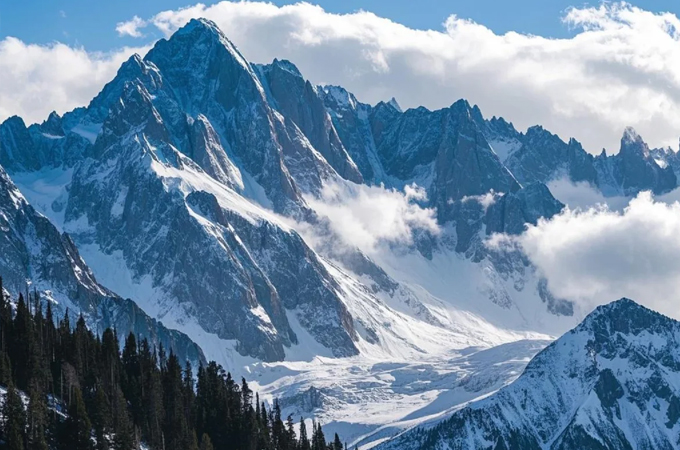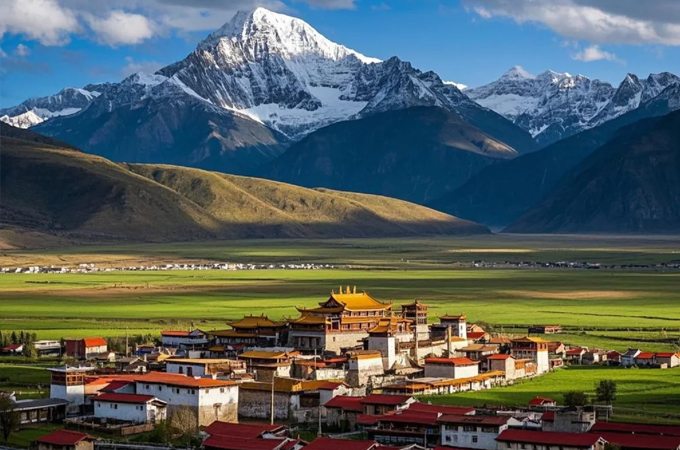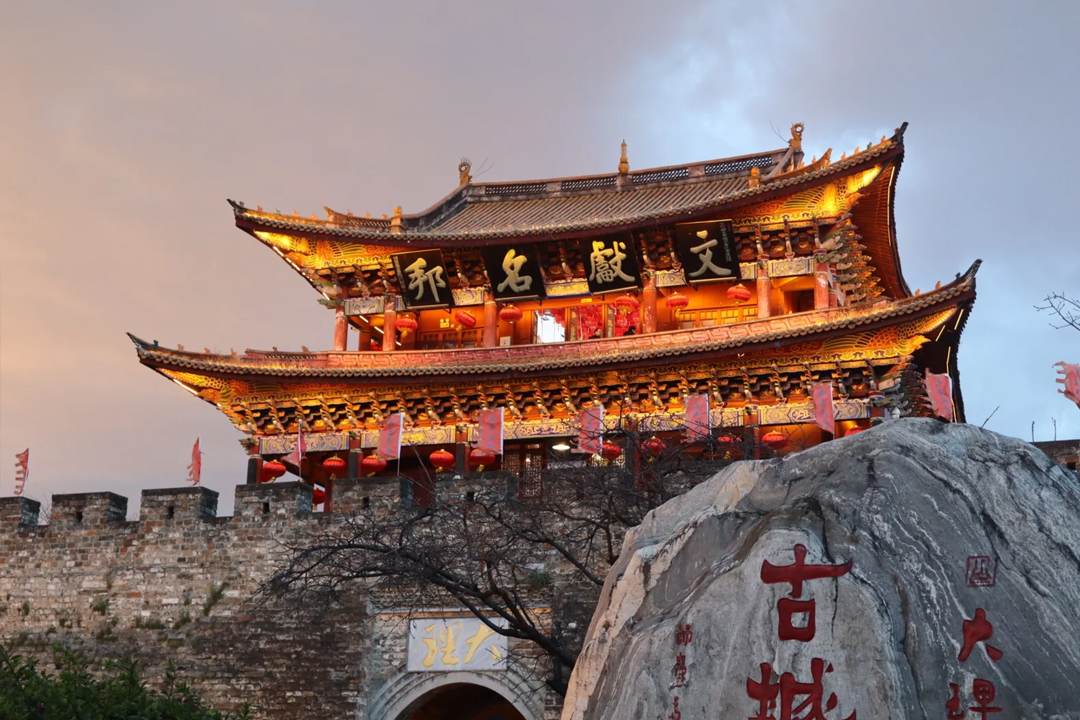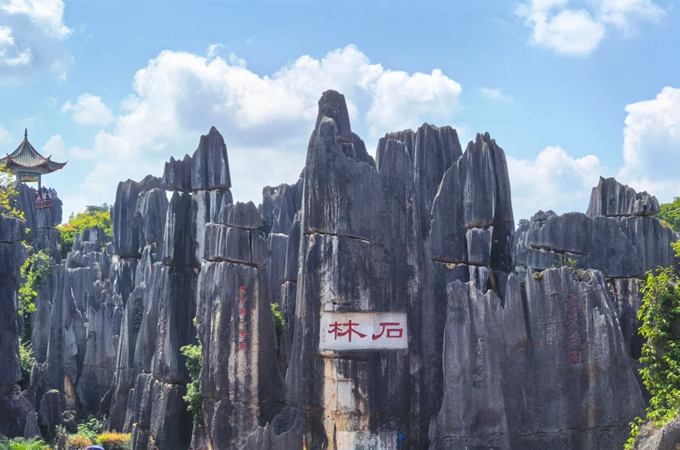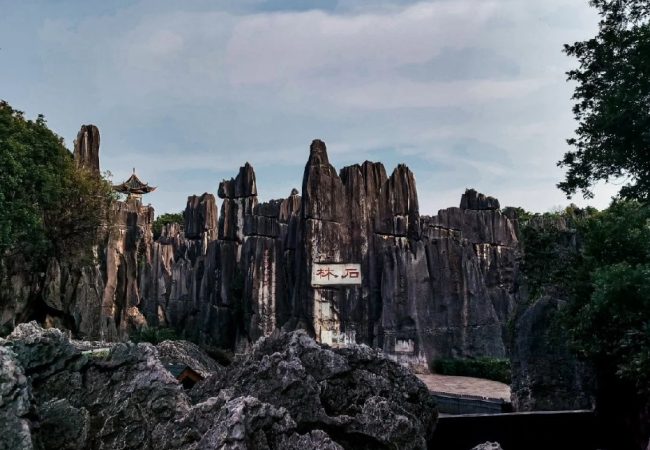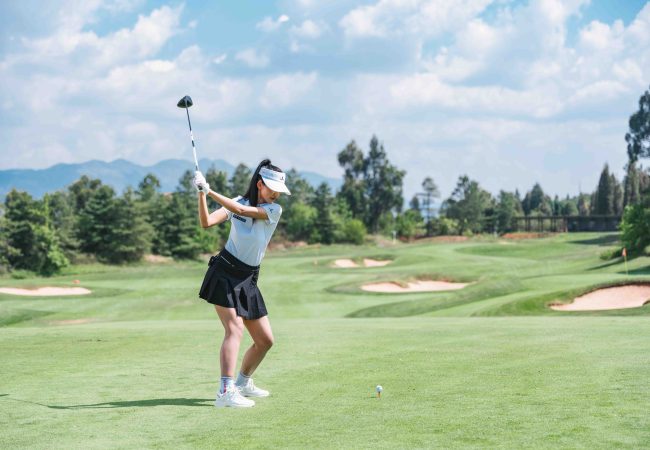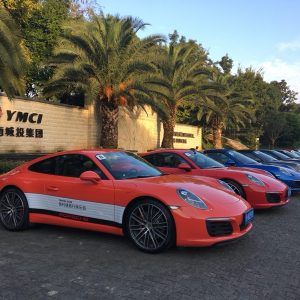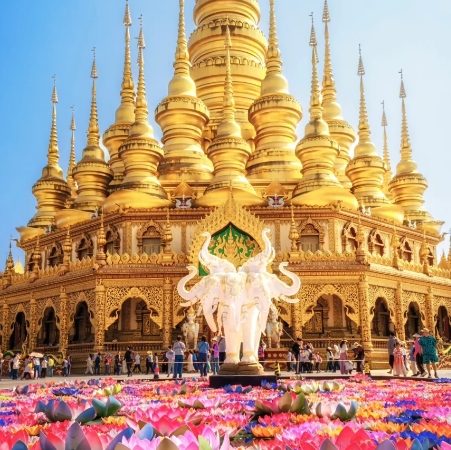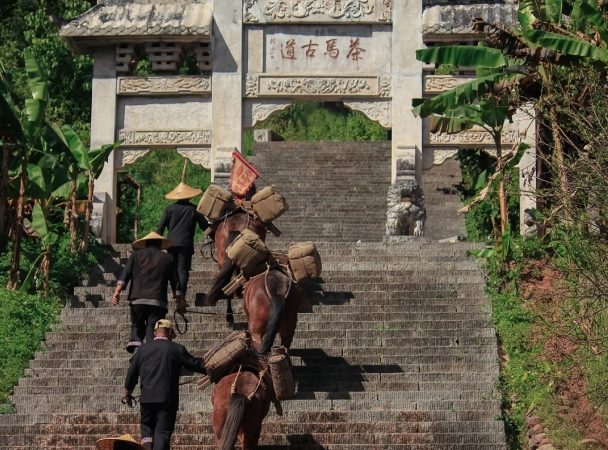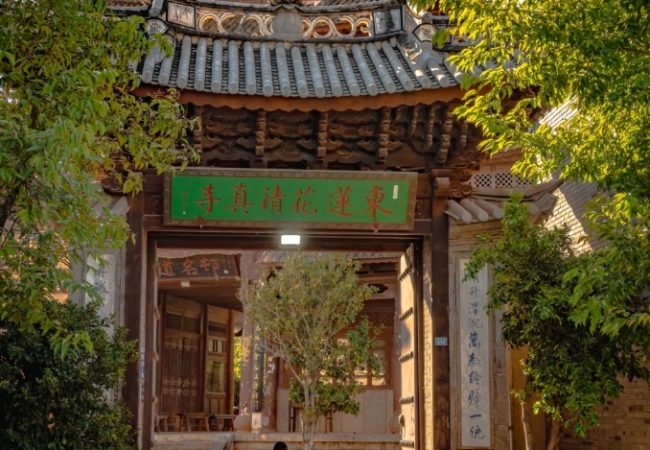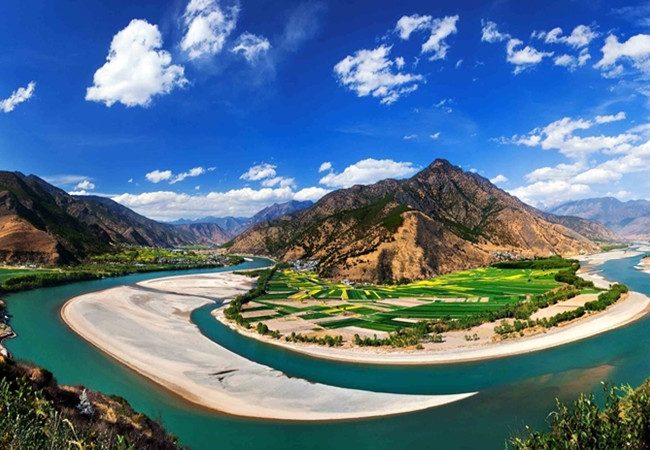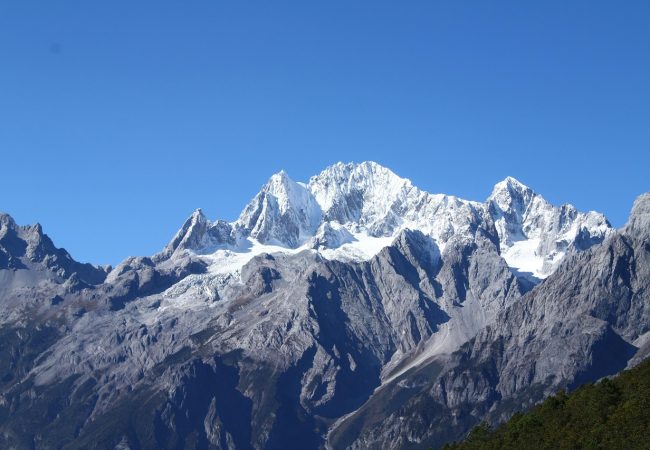
Lijiang City (丽江市) is located in the northwestern part of Yunnan Province (云南省), at the southeastern edge of the Tibetan Plateau, in the Yunnan-Northwest Plateau, and in the middle reaches of the Jinsha River (金沙江). It spans from 99°23′ East Longitude to 101°31′ East Longitude and from 25°23′ North Latitude to 27°56′ North Latitude, situated in the triangular region of Yunnan, Sichuan, and Tibet. To the east and northeast, it borders Panzhihua City (攀枝花市) and Liangshan Yi Autonomous Prefecture (凉山彝族自治州) of Sichuan Province. To the south, it connects with Dali Bai Autonomous Prefecture (大理白族自治州) and Chuxiong Yi Autonomous Prefecture (楚雄彝族自治州), either directly or across the river. To the west, it borders Nujiang Lisu Autonomous Prefecture (怒江傈僳族自治州) and Diqing Tibetan Autonomous Prefecture (迪庆藏族自治州).
Historical Origins
Lijiang has a long history. As early as 100,000 years ago, the late Paleolithic Homo sapiens known as the “Lijiang People” (丽江人) were active in this region. During the Warring States Period, it belonged to Shu Commandery of the Qin State. Over the centuries, it underwent numerous dynastic changes and administrative adjustments, and was established as a prefecture-level city in 2002.
Ethnic Cultures
Lijiang is a multi-ethnic region where 22 ethnic groups, including the Naxi, Yi, and Lisu, live in harmony. The Dongba Culture (东巴文化) of the Naxi people is a unique cultural treasure, encompassing Dongba script, Dongba scriptures, Dongba paintings, and Dongba music and dance. The Dongba script is the only living pictographic writing system in the world.
Historical Sites
Lijiang Ancient Town (丽江古城) is a UNESCO World Cultural Heritage site. Buildings within the town, such as Sifang Street (四方街), Mu Mansion (木府), and Wufeng Building (五凤楼), hold significant historical and artistic value. Other ancient towns like Shuhe Ancient Town (束河古镇) and Baisha Ancient Town (白沙古镇) also preserve a large number of architectural styles from the Ming and Qing dynasties, witnessing the historical changes of Lijiang.
Climate Characteristics
Lijiang has a subtropical plateau monsoon climate with distinct seasonal differences and a rich variety of climate types. It is characterized by vertical climate zones, often described as “four seasons on one mountain, different weather within ten miles.” It is one of the areas in Yunnan with abundant sunshine, with an annual sunshine duration of 2,298 to 2,566 hours, accounting for 53% to 59% of the potential sunshine hours. The average annual rainfall ranges from 800 to 1,000 millimeters, with the majority of precipitation occurring from June to September. The average annual relative humidity is 65%, and the average frost-free period is 210 days.
Tourist Attractions
Natural Landscapes
Yulong Snow Mountain (玉龙雪山)
Yulong Snow Mountain is the northernmost glacier mountain near the equator in the Northern Hemisphere. Its thirteen snow peaks stretch continuously, resembling a “gigantic dragon” soaring and dancing, hence the name “Yulong.” Visitors can take a cable car to the summit to enjoy the magnificent glaciers and snow-capped mountain scenery, and visit attractions such as Baishui River (白水河), Yunshanping (云杉坪), and Blue Moon Valley (蓝月谷).
Lugu Lake (泸沽湖)
Known as the “Pearl of the Plateau,” Lugu Lake is characterized by its crystal-clear waters and rich forest resources. Visitors can experience the unique “walking marriage” culture of the Mosuo people and enjoy the tranquil lakeside life.
Lashi Lake (拉市海)
Lashi Lake is a plateau lake in Lijiang and a paradise for rare birds and natural pastures. Visitors can enjoy activities such as horse riding and boating, and visit Zhiyun Temple (止云寺) to experience the solemnity and mystery of religion.
Cultural Landscapes
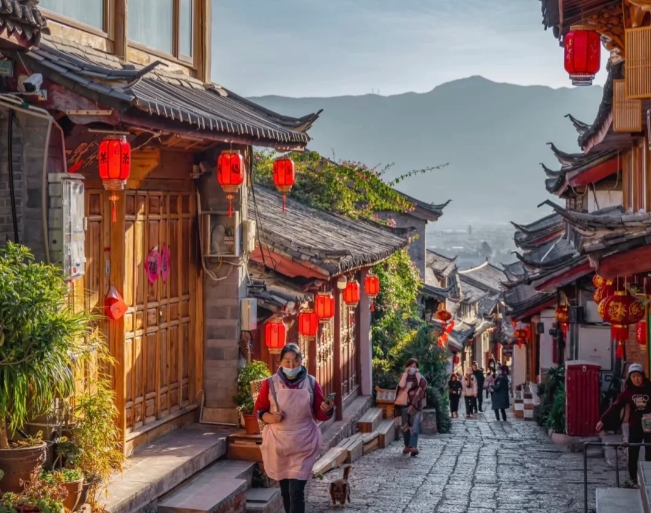
Lijiang Ancient Town (丽江古城)
A UNESCO World Cultural Heritage site, the ancient town features streets built along mountains and rivers, paved with red breccia, exuding a unique charm. Sifang Street is the town’s center, surrounded by shops; Mu Mansion, once the residence of the Naxi chieftain, is grand and majestic; and Lion Hill, the highest point in the town, offers panoramic views of the ancient town and the distant Yulong Snow Mountain.
Shuhe Ancient Town (束河古镇)
Shuhe Ancient Town is quieter and more serene than Lijiang Ancient Town. It has nearly a thousand traditional dwellings, with the local population mainly consisting of Naxi people. Visitors can wander through the town and experience its long history and unique ethnic culture.
Baisha Ancient Town (白沙古镇)
Baisha Ancient Town is the ancient capital of the Naxi people and the site of the world-class “Ancient Naxi Kingdom.” It is the most authentic town preserving Naxi heritage, offering deep insights into the history and culture of the Naxi people.
Transportation
Air
Lijiang Sanyi International Airport (丽江三义国际机场) operates numerous domestic routes, with direct flights to major cities such as Beijing, Shanghai, Guangzhou, and Shenzhen. It also has a few international routes, facilitating travel for domestic and international tourists.
Railway
Lijiang has railway stations such as Lijiang Station (丽江站), with convenient rail connections to cities within Yunnan Province, such as Kunming and Dali, as well as to neighboring provinces like Sichuan and Chongqing.
Highway
The region is served by five expressways, four national highways, and six provincial highways, forming a comprehensive road network. Visitors can drive or take long-distance buses to various attractions within Lijiang and surrounding areas.
Accommodation Options
Luxury Hotels
Aman Lijiang (丽江大研安缦酒店): A fully wooden structure in traditional Naxi architectural style, set in a beautiful environment.
Hylla Wu Yun Design Hotel (物与岚设计收藏酒店): Offers stunning views of Yulong Snow Mountain and is highly designed.
Jinmao Puxiu Snow Mountain Hotel (丽江金茂璞修雪山酒店): Located at Ganhaizi (甘海子) of Yulong Snow Mountain, with a view of the golden sunrise on the mountain.
Family-Friendly Hotels
Club Med Lijiang (地中海俱乐部丽江度假村): Features a rich selection of childcare programs, making it ideal for families with children.
Character Inns
In Lijiang Ancient Town and Shuhe Ancient Town, there are numerous character inns that mostly retain the traditional Naxi architectural style. These inns are quaint and affordable.
Local Food
Smoked Pork Rib Hot Pot
One of Lijiang’s signature dishes, made by simmering smoked pork ribs in a broth with various vegetables. It is salty, fresh, and rich in flavor.
Naxi Grilled Fish
Cooked using a unique local method, the fish is crispy on the outside and tender on the inside, often served with flavorful fermented bean paste and delicious condiments.
Chickpea Jelly
A local specialty with a smooth and refreshing texture, which can be enjoyed cold or grilled.
Lijiang Baba
Made from glutinous rice flour and brown sugar, it is soft and chewy, with both sweet and savory flavors available.
Black Goat Hot Pot
Using local black goats as the main ingredient, the meat is tender and succulent, rich but not greasy.
Shopping Recommendations
Lijiang offers a wide variety of local handicrafts, such as Naxi Dongba paper, Dongba wood carvings, and silverware, all of which have high artistic value and commemorative significance. In the streets and alleys of Lijiang Ancient Town and Shuhe Ancient Town, there are many specialty shops where visitors can purchase these handicrafts. Additionally, local tea and traditional Chinese medicines are also great choices for shopping.
We hope this introduction helps you understand Lijiang and plan your trip more effectively.

